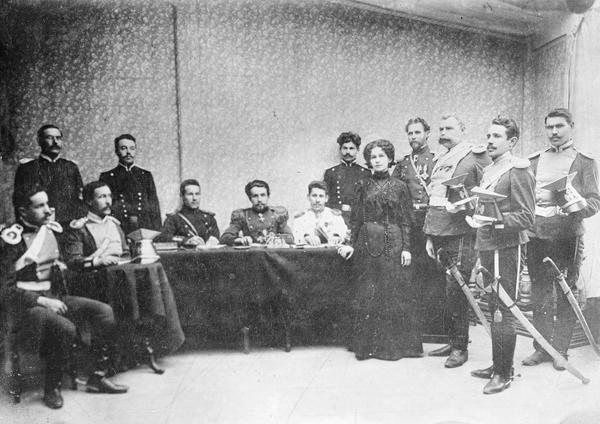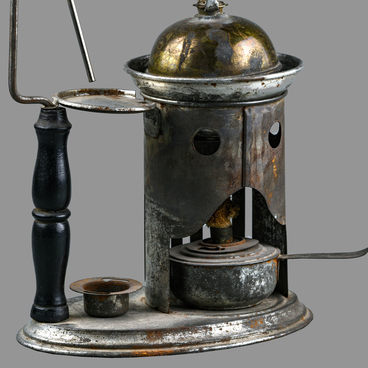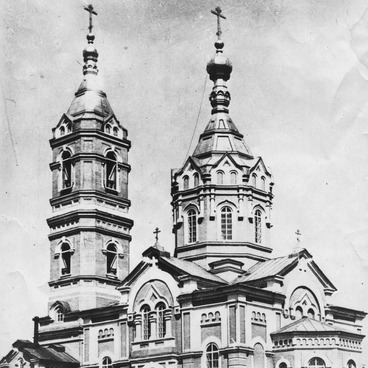The end of the 19th century in the Russian Empire was marked by the appearance of a huge number of small amateur theaters, which were destined to play one of the leading roles in the cultural life of Russian provinces. The county of Orsk was not left out either - in 1890s the first amateur theater troupe emerged there. The network of actors was joined by school teachers, doctors, officials and many others. Representatives of a wide variety of social classes took part in the plays.
For the 100th anniversary of Pushkin’s birth, two city amateur troupes included in their repertoire several performances based on works of the great Russian writer. The plays were arranged by the Orsk County Committee of Guardianship of People’s Sobriety in a tea room designed for a few dozens of seats.
The Committees of Guardianship of People Sobriety are an exceptional phenomenon in Russian history. On December 22, 1894, the Ministry of Finance headed by Sergey Witte appealed to the high society of Russia to unite against the greatest national scourge – alcoholism. The very first Guardianships of People Sobriety were established in Ufa, Perm, Orenburg and Samara provinces (760 committees by mid 1902).
In a circular, Witte said that in the fight against drunkenness the Guardianships must organize inexpensive tea shops, eateries, libraries, reading rooms and theater plays. In Orsk, tickets for such performances were sold both in advance in the store of the merchant Nazarov, and on the day of the performance.
For the 100th anniversary of Pushkin’s birth, two city amateur troupes included in their repertoire several performances based on works of the great Russian writer. The plays were arranged by the Orsk County Committee of Guardianship of People’s Sobriety in a tea room designed for a few dozens of seats.
The Committees of Guardianship of People Sobriety are an exceptional phenomenon in Russian history. On December 22, 1894, the Ministry of Finance headed by Sergey Witte appealed to the high society of Russia to unite against the greatest national scourge – alcoholism. The very first Guardianships of People Sobriety were established in Ufa, Perm, Orenburg and Samara provinces (760 committees by mid 1902).
In a circular, Witte said that in the fight against drunkenness the Guardianships must organize inexpensive tea shops, eateries, libraries, reading rooms and theater plays. In Orsk, tickets for such performances were sold both in advance in the store of the merchant Nazarov, and on the day of the performance.
In late 1903, a professional troupe of Russian and Belarusian actors, performing Peter Nevezhin’s drama “The Second Youth”, visited Orsk. Despite the city having no professional theater of its own, in 1905 the nobleman Shklyarovich was appointed the commissioner of the Russian Theater Society, which was founded under the August patronage of the Russian Emperor. After eight years, a petition for registration of the Orsk Drama Lovers Circle was submitted to the Orenburg Provincial Presence on Society Affairs. However, it was rejected due to the fact that the charter of the Circle allowed for profit from theatrical business, which was at that time prohibited by the “Rules of Societies and Unions”, signed back in 1906.
The history of the two-story mansion, located on K. Marx Street (formerly named Lazaretnaya and Gogolevskaya Street), is closely connected with the emergence of a cinematograph in the city. The architect, carefully designing the semi-columns and the unique window decorations, managed to combine the eclecticism of three styles at once: Russian, mason and baroque. The mansion was built in 1904, as evidenced by the date laid out of bricks above the corner part of the facade.
In 1908-1917, an amateur Tatar drama troupe under the direction of Mirkheidar Faizi, a country-wide known classic of Tatar drama, staged plays in the spacious luxurious hall on the second floor of the mansion.
In 1908-1917, an amateur Tatar drama troupe under the direction of Mirkheidar Faizi, a country-wide known classic of Tatar drama, staged plays in the spacious luxurious hall on the second floor of the mansion.



